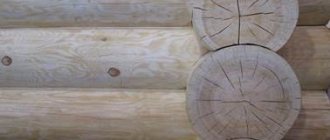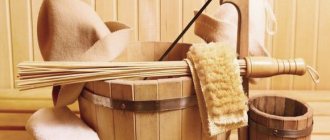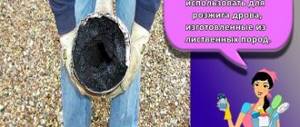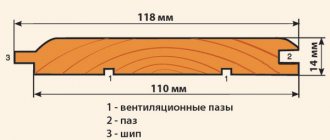What you need to know about soot
The properties of soot directly depend on what materials were burned.
For example, wood releases more resinous soot; when plastic burns, it is caustic and sticky. In any case, carbon deposits contain a certain amount of fat, so you can’t just wipe it off the surface. If you try to wipe off the soot with a regular napkin dipped in water, the situation will only get worse. To remove soot, you must use fat-soluble products.
https://www.youtube.com/watch?v=WT3FqN4DLa0
Soot particles are very small. They easily penetrate into porous materials, from where they are difficult to remove.
Among other things, fumes are toxic. It is especially dangerous to stay indoors for a long time after a fire. When cleaning, it is recommended to wear a respiratory mask and protect your hands with gloves. When cleaning the ceiling, wear safety glasses to prevent the suspension from getting into your eyes.
Note! Laundry soap and hot water will help remove soot from your skin.
Features of chemical cleaning
Due to their qualitative characteristics, chemical preparations easily solve the problem of how to clean a bathhouse from soot. The soot cleaner is made from alkaline composites and organic additives:
- breaks down resinous substances in soot very quickly;
- removes all plaque on walls, ceilings, pipes;
- cleans even old places.
Most often, the preparations are concentrated and therefore diluted with water. The composition of the drug is made without aggressive components. Chemicals dissolve quickly, do not accumulate on wood, are fireproof, and non-toxic. You don't have to worry about your health.
It is better to apply the product to wooden surfaces with a sprayer, and then rinse again with clean water. If traces of soot remain, the removal procedure must be carried out again.
Basic Rules
How to clean soot in a bath? There are certain rules for this. For example, wooden surfaces covered with a layer of soot should not be wetted.
Wood is a hygroscopic material that quickly absorbs moisture. Together with water, everything that has settled on the surface - soot, soot, bodily fluids, etc. - will be absorbed into the structure of wooden elements. Once the dirt is absorbed into the surface of the wood, it will be almost impossible to clean the shelves in the bathhouse, walls, floor or ceiling.
Therefore, when deciding how to clean soot from walls or floors in a bathhouse, you should categorically refuse to use such substances and materials as:
- laundry soap;
- water;
- sponges;
- spray guns.
All of the above products can only be used for final cleaning of wooden surfaces, when the carbon deposits have already been cleaned dry.
All work on cleaning the bathhouse from soot and soot must be carried out using special protective equipment:
- blind safety glasses;
- respirator;
- thick rubber gloves.
All this will help prevent combustion products from entering the respiratory tract.
Soot, also called soot or soot, is small particles of materials that have not burned completely. In order to wash it, you will have to use fairly aggressive methods. The main feature is that soot has one very insidious property: if you add even a little water to it, it will turn from a dry substance into a fatty sticky mass.
When talking about how to clean soot, you should pay attention to the fact that you need to exclude the following products:
- water;
- liquid or laundry soap;
- sponges and any hard brushes.
All of the above products can be used only after carbon deposits have been removed from wood or other surfaces. In order to clean soot from surfaces, it is necessary to use personal protective equipment. You will need:
- glasses;
- robe;
- headwear, such as a cap or scarf;
- respirator (you can replace it with a regular gauze bandage);
- latex gloves.
Cleaning walls and ceilings
Solving the problem of how to clean soot in a bathhouse begins with a vacuum cleaner. To do this, you need to walk it on wooden surfaces. Next, you need to carefully sweep away the soot and soot from the walls and ceiling with a broom.
Prepared surfaces must be cleaned with specially impregnated sponges. They are sold in hardware stores. During the manufacturing process, such sponges are impregnated with special compounds that destroy soot and soot.
Sponges get dirty quickly, so you need to purchase several of them at once. You can extend the life of use by cutting off the soiled layer of the sponge. When the soot and soot have been completely removed, you can clean the surfaces of the walls, floors and ceilings with aqueous solutions of detergents.
Abrasive powders cannot be used in this case. They spoil the structure of wooden surfaces.
On a note! It is advisable to use degreasing powders and/or gels. They are added to hot water.
To clean hard-to-reach areas, it is better to use a mop with a long handle.
Surfaces are washed 2-3 times. In this case, the water must be changed periodically, adding a new portion of detergent to it.
When the question of how to clean the lining in a bathhouse from soot has been resolved, you need to rinse off the cleaning solution with clean water. For this it is better to use running water. It is better to feed it from a hose under low pressure.
At the end of the process, wipe the washed surfaces dry with a clean soft cloth. You can use an old bath towel. A large amount of moisture or poor thermal insulation may cause the lining to turn black. In this case, the answer to the question of how to clean the lining in a bathhouse will be a grinding machine, but this is if the darkening has affected only the surface layer of wood.
To clean walls lined with clapboard, you will need an angle grinder with a power of no more than 1 kW and a flap wheel with a diameter of 125 mm (grit size no more than 40 units). The lining is sanded in such a way as to remove the darkened layer to a depth of approximately 3 mm.
If the blackness has been absorbed to a great depth, the lining can be painted. But not in the steam room. No paint coatings are used here at all. You can replace the darkened lining partially or completely with new material.
Impregnating compositions for bleaching darkened wood, prepared on the basis of chlorine, are not recommended, since the carbon particles that determine the dark color of the walls are practically not discolored by compositions containing active chlorine.
Over time, unaesthetic dark spots appear on the surface of the bathhouse logs on the outside, which spoil the appearance of the structure.
Liquid bleach can be used to remove such stains. It is applied to a surface that has been previously cleaned of dust and dirt. For work, brushes with artificial bristles are used, which need to be changed periodically, because the cleaning composition corrodes them. Before applying, you need to test its effect in an inconspicuous place.
The product is carefully distributed over the entire surface and left for some time according to the instructions on the package. Then you need to rinse the surface with running water from a hose. Next, the bathhouse is ventilated to remove the pungent odor of bleaching agents.
If the blackening penetrates to a greater depth, the logs can be sanded with a grinder. In this case, safety precautions must be observed.
To clean the shelves in the bathhouse, you can use a car wash. Water is supplied through it mixed with air and under high pressure. This helps to easily remove the top layer from darkened wood. In this way you can also clean the floors, walls and even the ceiling in the bathhouse.
To thoroughly clean the floor in the bathhouse, you can use a plane, preferably with an electric drive. First, the floorboards must be carefully removed and thoroughly dried, then processed with a plane. In this case, the top layer of wood on each side is removed to a depth of 5 to 10 mm.
This type of cleaning often results in sharp edges on the floorboards. They can be removed with a belt or vibratory sander. You can also use these devices to clean up darkened wood instead of using a plane.
If the darkened layer of wood is thin, you can simply sand the surfaces with sandpaper. An electric drill with a special attachment will help make the process easier. You can only work with completely dry surfaces.
This method will help you get into corners and other hard-to-reach places. There is no need to remove individual elements.
This treatment is often recommended when answering the question of how to clean aspen seats and other wooden surfaces in a bathhouse. After processing and sanding with sandpaper, they will not only be clean, but also absolutely smooth.
We remove soot from smooth, washable surfaces
Plastic laminated coverings, linoleum, and varnished interior items do not contain pores, so dirt disappears from them quickly. To quickly remove soot from such coatings, any detergent is sufficient: laundry soap, washing powder, liquid soap, even dish gel will do.
A soap solution is diluted in hot water. How to remove soot depends on the amount of dirt. It will be convenient to wash a cabinet or other small piece of furniture with a soft cloth or gauze. For small items it is better to use a sponge. And for the floors you need rags.
A napkin/sponge/rag is moistened in a soapy solution and the smoked areas are washed. If there is a lot of carbon deposits and the water quickly turns black, change it. And so on until all the soot is washed away. Finally, the surface is washed with clean water.
We invite you to read: Construction of a Turkish bath (hamam)
Soot deposits on walls and ceilings are removed in a few steps. Be sure to cover the floor with cellophane, and it is recommended to seal the joints with tape so that the removed soot does not soak into the floor. Plaque can be removed with a vacuum cleaner or a dry broom using jerky movements, and then treat the walls and ceiling with a specially impregnated sponge.
The chemical composition is left on the surface for a specified period of time in accordance with the manufacturer’s recommendations, and then washed off with warm water along with any remaining soot and soot. If necessary, repeat the procedure. After completing the treatment, allow the surface to dry thoroughly.
Where does the soot come from?
Untreated tree trunks are used to build a bathhouse.
The smell of wood under the influence of steam plays the role of a flavoring agent. But the open pores of wood are very susceptible to absorbing soot and soot. Soot, flying out of the oven door and through other holes, smokes unnoticeably, but after a couple of weeks the entire ceiling is covered with a black layer. Together with moist air, a layer of soot covers the walls of the bathhouse and penetrates deep into the wood. Cleaning wood from soot and soot requires some effort and means.
Why does the chimney become dirty?
How to clean a chimney in a bathhouse depends on the nature of the contamination. With use, types of clogging may occur such as:
- soot and soot, which accumulates very quickly when burning household waste;
- condensation that forms due to irregular use of the bathhouse;
- foreign objects accidentally falling into the chimney.
All of these types of contaminants ultimately impede the free circulation of air and the escape of smoke through the chimney. This may cause carbon monoxide poisoning. Condensate is a weakly concentrated acid solution. Under its influence, the chimney masonry begins to collapse from resinous deposits.
If you use a sauna regularly, you need to make a schedule and determine in advance when and how to clean the pipe in the sauna. Carrying out such work regularly will preserve the chimney and stove and allow you to use the sauna without any problems.
The chimney and pipe in the bathhouse are cleaned chemically and/or mechanically. In a special store you can purchase liquids and/or powders for cleaning the chimney. Detailed instructions are printed on the packaging. After reading it, it will become clear how to clean a pipe in a bathhouse.
A good answer to the question of how to clean soot in a bathhouse that has accumulated in a chimney would be a “log chimney sweep.” It is impregnated with special chemicals. During combustion in the furnace, smoke of a special composition is released. As a result, the soot becomes soft and pliable. After 2 or 3 days it can be removed with brushes without much difficulty.
For mechanical cleaning of the chimney you will need the following tools and devices:
- rope and/or rope;
- weight (ball);
- brush-ruff (preferably on a thin metal cable).
First you need to check the safety of the structure. Then you need to remove any objects that accidentally got into them from the pipe and chimney. For this purpose, a brush-ruff is used, selected according to the size and shape of the pipe.
A special modern brush will make cleaning work easier. It comes with a handle consisting of several links. This allows you to adjust the length of the brush as needed. During cleaning work, any brush must be moved inside the pipe, gradually moving it lower and lower.
Such work must be performed in a special set of clothing, which must include:
- overalls or suit;
- respirator;
- gloves;
- protective glasses.
If the chimney is not very dirty, you can call a specialist. He will clean it using a special high-power vacuum cleaner. This will remove soot from the chimney through the firebox opening. The use of special means will help resolve the issue of how to clean the chimney of contaminants and how to clean the pipe of soot in a bathhouse.
What is the difference between a specialized and a conventional product?
It’s worth starting with the environment and atmosphere that reigns inside steam rooms, baths, and saunas. Their main purpose is to steam and wash. Therefore, water and high temperature are constant companions of such premises. The temperature ranges from 60 to 100 degrees depending on preference manually: by pouring cold water on the stones (to cool the heat), or by throwing firewood into the stove/switching the artificial apparatus to higher settings (to add heat).
Constant temperature changes, high levels of humidity, and the use of wood materials inherent in saunas have determined the need to use a safe detergent for baths.
Cleaning heating equipment
Soot can accumulate on the walls after a fire. It often forms around the fireplace. Before you start cleaning the walls from soot, the excess must be brushed off with a broom, brush or vacuum cleaner.
Next, the following substances will help you clean the walls from soot yourself:
- Special sponges soaked in soot-soluble liquid (sold in hardware stores).
- Alcohol. Napkins or gauze are soaked in it and carbon deposits are removed from the walls step by step.
- Petrol. This liquid also dissolves soot perfectly. Gauze is moistened in it and the surface of the walls is wiped.
The listed products can be used to clean any other surfaces (including the ceiling) that cannot be washed well with ordinary soap. In order not to stain the floor when cleaning the walls or ceiling, it is covered with plastic film or old newspapers.
Note! Heavy deposits of soot can rarely be washed off the walls without leaving a trace. Even if the blackness disappears, erased traces remain on the whitewash and wallpaper. Most likely, you will have to refresh the walls and cover them with new finishing material.
We suggest you read: What to use to glue tiles to a stove
Soot also settles on the glass. Any special glass cleaner will easily remove carbon deposits. Before using it, it is necessary to remove excess soot with a cloth, moistening it in a soap solution.
If there is no glass cleaner, then drop a little ammonia or vinegar into the water and finish washing the windows. To give the glass a crystal shine, use special microfiber cloths or plain newsprint.
Wood is a highly porous material. Soot particles can penetrate so deeply into its microholes that simple surface washing will not help. First, you should try to wash off the carbon deposits from the wood using any of the above methods (soap solution, alcohol, gasoline, ammonia solution). If the blackness does not go away, there is only one option left - sanding the wood.
For small surfaces, a piece of sandpaper will suffice. Larger areas are treated with a grinding machine.
When trying to put out a fire or even when cleaning a room from soot, you can get your clothes dirty. But there is no need to panic, soot is easily removed from fabrics. You don't need any special tools. Simply soak the item in soap or powder and then wash it in the washing machine at the maximum temperature allowed for the fabric.
For white items, you will most likely need to use bleach.
Note! Household carpet cleaners will help remove soot from the carpet. A washing vacuum cleaner will make the task easier.
Often, soot particles settle on the sauna stove and on the objects that surround it. What to do in this case? First, decide what material the stove or boiler is made of. After all, the methods for cleaning soot from different surfaces differ significantly! We suggest we talk about how to remove soot from bricks and metal structures.
How to deal with soot in a bathhouse?
There are several ways to clean a sauna from soot. You can choose any one, but the main thing is to compare the costs of time, effort and money.
Method one
A proven method for real housewives has always been to wash away dirt from the walls. Add detergent to the water, take a rag and brush and begin to scrub off the soot.
Advantages: the method has been proven for centuries and does not require special material costs.
Disadvantages: labor-intensive process; the soot is not washed off, but rubbed onto the wood; soot ingrained into the wood is not washed off at all; Over time, the wood simply takes on a black tint.
Method two
Mechanical removal of soot, when it is scraped from wood with special scrapers, a stiff brush or a grinding machine.
Advantages: all deposits, including mold, are removed along with the soot.
Disadvantages: too much physical effort and time must be spent; Irregularities in the wood (knots, depressions, chips) are still not completely cleaned.
Method three
A modernized method of cleaning a bathhouse from soot using chemicals.
Advantages: oily substances in soot are completely dissolved; the tree is completely cleaned; environmentally friendly product; retains its properties at any temperature.
Disadvantages: the only disadvantage may be the lack of money to purchase special tools.
After many years of use in the bathhouse, soot appears on the walls. Several methods are used for cleaning:
- 1. Mechanical devices. Use a sharp metal object to scrape off soot from the walls. This method requires a lot of time and effort. To make it easier, you can use a sanding machine.
- 2. Traditional methods. To remove soot, use crushed sand or brick. These products act as a scrub, removing soot from the walls. To avoid contamination, you can wipe the walls with soapy water after each heating of the sauna.
- 3. Chemical compositions. Special washes allow you to quickly and effectively clean the walls of a bathhouse from soot. Such products contain special alkaline substances that easily cope with soot formation.
Special chemicals for soot removal
There are special chemical liquids designed to completely neutralize soot and unpleasant odors after fires. They are not sold in every store, but it is quite possible to get them in specialized retail outlets. They perfectly remove soot even from porous surfaces such as concrete and brick.
The most popular effective professional soot neutralizers:
- Facade cleaner No. 2.
- Mazbit.
- Clean-Dezo.
- BZ-20.
The products are available in the form of colorless liquids poured into plastic canisters.
These were the most effective recommendations on how and how to wash off soot on your own. If there is extensive soot after a fire, it is better to call a special service for your own safety. A burnt-out room has a high concentration of toxins and it is necessary to work in it in a special protective suit.
A range of specialized sauna care products
It is worth noting that, despite its narrow focus, the market for detergents intended exclusively for treating baths is very rich in various offers.
Let's understand the very essence of such a tool. It is a combination of chemical components that have a cleansing effect on dirty surfaces (wood, tiles, glass, etc.) and disinfectant properties. It is also ensured that there will be no further accumulation of wet vapors on the wood, that is, fibers will not be absorbed or swell. It also contains substances that affect insects that have settled in the bathhouse - they destroy them.
So what safe bath cleaner will be most effective? Conventionally, all the wealth of this market segment can be divided into four groups:
- Organic - fights well with indoor humidity and fumes accumulating on the tree. After their use, a protective layer of a special film is formed on it, which resists the process of wood absorbing wet steam.
- Oil based - no explanation needed here.
- Diluted with water - at the exit from production they are concentrated substances that must be mixed with an aqueous liquid during use. Designed for any type of material from which the surfaces are made. Very effective.
- Mixed - products with high disinfectant properties. It is recommended to use them during the construction of baths and saunas. After all, it is this fact that will help preserve it in the future, reduce the level of flammability of the object and destroy the harmful insects that settle in.
It is worth emphasizing that, although these are chemical compounds, they are characterized by safety for humans and the absence of an irritating odor. These factors make working with drugs much easier.
Cleanliness in the steam room
The steam room in the bathhouse requires special attention. After all, when using brooms, particles of plant pigment from stems and/or leaves are absorbed into wooden shelves and walls along with moisture. Therefore, the question inevitably arises of how to clean the steam room in a bathhouse to give it a fresh and pleasant look.
The problem of how to clean linden lining in a bathhouse, especially in the steam room, can be solved in different ways. If the wood darkens slightly, you can use special liquid detergents and/or paraffin oil.
The cleaning liquid is applied to the darkened surfaces manually using a piece of foam rubber or a regular sponge. The pre-detergent must be diluted with water. How to do this is detailed in the instructions.
Paraffin oil is gradually applied to pre-dried surfaces using a dry sponge. In this way, you can not only clean the lining in the steam room, but also give the wood water-repellent properties. This will protect the wood trim and various items from severe and rapid contamination.
Prevention
In order not to think about why the lining in the bathhouse turned black, what to do with the dirt and how to restore the aesthetic appearance of the room, it is better to carry out preventive measures in a timely manner. This should also be done after cleaning the material.
Firstly, it is recommended to install an effective ventilation system in the dressing room (to remove soot and excess moisture), install low-power fans (a few watts are enough) in the ventilation holes to dry the condensate. Secondly, you need to regularly ventilate the room. Experts also advise plugging the vent holes while the bathhouse is heating (especially in winter), and then opening them again.
Bath water purification
The required amount of water for hygiene procedures is often provided by drawing water from a nearby reservoir, well or borehole. Before use, it is necessary to thoroughly clean the bath water from various impurities, silt, sand, and small pebbles.
The main methods of water purification are filtration and sedimentation. You can buy a special water filter in a store or make it yourself. For this you can use a fine mesh.
To settle, water is poured into a large tank about a day before its intended use. During this time, all impurities will gradually settle to the bottom of the tank. From above it will be possible to take clean water suitable for hygiene procedures.
We suggest you read: Lighting in a washing bath
The basic rule: the settled water should be taken from above, trying not to raise sediment. The water is not used until the end. It is better to pour the remains into the drainage well along with the sediment. Therefore, you need to prepare water with a reserve.
How to remove soot from walls
Wood is a porous material, so soot settles not only on top, but is also absorbed deep into the wooden walls. You need to clean it constantly so as not to turn the bathhouse into a black firebox.
Method 1
We wash off the soot from the walls with a stiff brush, adding detergent. You will have to make a lot of effort to remove the soot that has stuck to the walls.
If the layer is too thick, you need to act more radically. Using a scraper or other sharp object or a grinding wheel, the soot is removed along with the top layer of wood.
Method 2
Among the modern methods of removing soot from walls in a bathhouse, the most effective is the chemical method.
A special remover has the ability to break down viscous soot molecules.
The prepared solution is applied to the wall for a while and then washed off with water.
We get clean, undamaged walls with minimal physical effort.
Proper maintenance of the bath
To prevent severe contamination and the appearance of fungus, mold, and woodworms, the bathhouse must be kept clean at all times. It is advisable to periodically treat internal surfaces with antiseptics to protect against microorganisms.
To prevent rotting of wooden coverings, it is necessary to apply special compounds to walls, shelves, etc. All wooden surfaces should be inspected periodically. Elements affected by rotting must be removed partially or completely.
After each use, the bathhouse must be ventilated to dry the interior. Immediately after taking bath procedures, you need to do cleaning. This will remove any stains from the interior surfaces before they are absorbed into the wood.
They are removed with a special brush, sponge or rag. After that, shelves and other surfaces should be washed with warm water. This will help remove residual sweat, detergents, etc.
The remaining water on the floor must be carefully adjusted to the drain holes. When cleaning, special attention should be paid to the space under the shelves.
To prevent cockroaches or mice from getting in, all leftover food from the rest room must be removed immediately and the trash taken out. Bath accessories should be dried and placed in storage areas. The final stage is wet cleaning of all sections of the bathhouse. It is also necessary to carry out general cleaning periodically. Proper maintenance of the bathhouse will preserve the attractive appearance and cleanliness of the interior space, as well as the integrity of all coatings.
The best wood bleaches from different manufacturers
To decide which bleach or antiseptic to choose, you need to consider the best options available on the market.
Some are universal, others are more suitable for repairing or processing log facades, while others are suitable for baths and saunas. Table. Manufacturers of bleaches and product features.
Bleach manufacturers and product features
We do not claim to be an exhaustive list of the best drugs; we express our personal opinions. If you have experience using other good products, write to us in the comments. The product from GOODHIM has a lot of interesting qualities, so we put it first on the list. What are these qualities:
- complete security;
- reliable protection against mold and blue stains;
- deep penetration;
- protects against all types of biological damage;
- suitable for use in baths and saunas.
This is a relatively inexpensive and effective product, made according to a modern recipe using the latest equipment. The product meets Russian and European quality standards.
Metal
Cleaning metal structures is a fairly simple procedure: you will need a clean, damp sponge and soap solution. If the soot layer is too dense, you can use fine river sand. True, it must be borne in mind that abrasive materials perfectly clean metal, but at the same time they contribute to the appearance of corrosion and can destroy it.
For this reason, experts recommend using abrasives only if no other cleaning method is suitable. After this, it is necessary to paint all damaged surfaces. Neutral chemical compounds and removers are much better suited, because they will not only clean the metal surface, but also will not damage it. Among the folk methods, one can note the purification of metal using water in which citric acid is diluted, or Coca-Cola.
Grinding
If the lining has darkened slightly, how can you lighten it by sanding?
In the case where the blackening has not penetrated to a great depth, you need to take an angle grinder with a power of up to a kilowatt for a wheel with a diameter of 125 mm. For doing the work yourself, this is the safest and easiest to use option. You can remove the protective cover from the machine. This is a safety precaution, but it allows you to get into all the grooves of the wood panels to thoroughly clean them.
Craftsmen recommend using a flap grinding wheel. This is a special device with ribs over the entire surface. The optimal grain size is about 40 units (on sale you can find wheels from 36 to 150). The lower this value, the rougher the processing will be. To completely eliminate blackness, it is usually necessary to remove the top layer of wood 3 or more millimeters thick.
Brick
How to remove soot from a brick stove in a bathhouse? One of the most effective methods is to use a simple detergent and sponge. You need to take the detergent, dilute it with water and whisk until a thick foam forms. The treated surface should be left for 10-15 minutes, then rinsed with water.
Another great way is to use vinegar essence. You will need tap water and table vinegar. For one glass of vinegar you need to take two glasses of water. Don't forget to use gloves! Apply the solution to the brick, leave for 10 minutes, then rinse thoroughly. How to wash off soot if it has penetrated deep enough into the brick pores?
Tags: bathhouse, wood, soot, wash off
« Previous entry
Buy a detergent
You can buy a product for cleaning bath soot from walls in a specialized store of our company.
The concentrated water-based product has an enhanced effect on soot, an environmentally friendly composition, and high resistance to temperature changes.
On the company’s website you can view the product catalog and order any batch of detergent for cleaning soot from the manufacturer at affordable prices.
You can buy chemicals to combat soot in the bathhouse in specialized stores or leave a request on our website.











